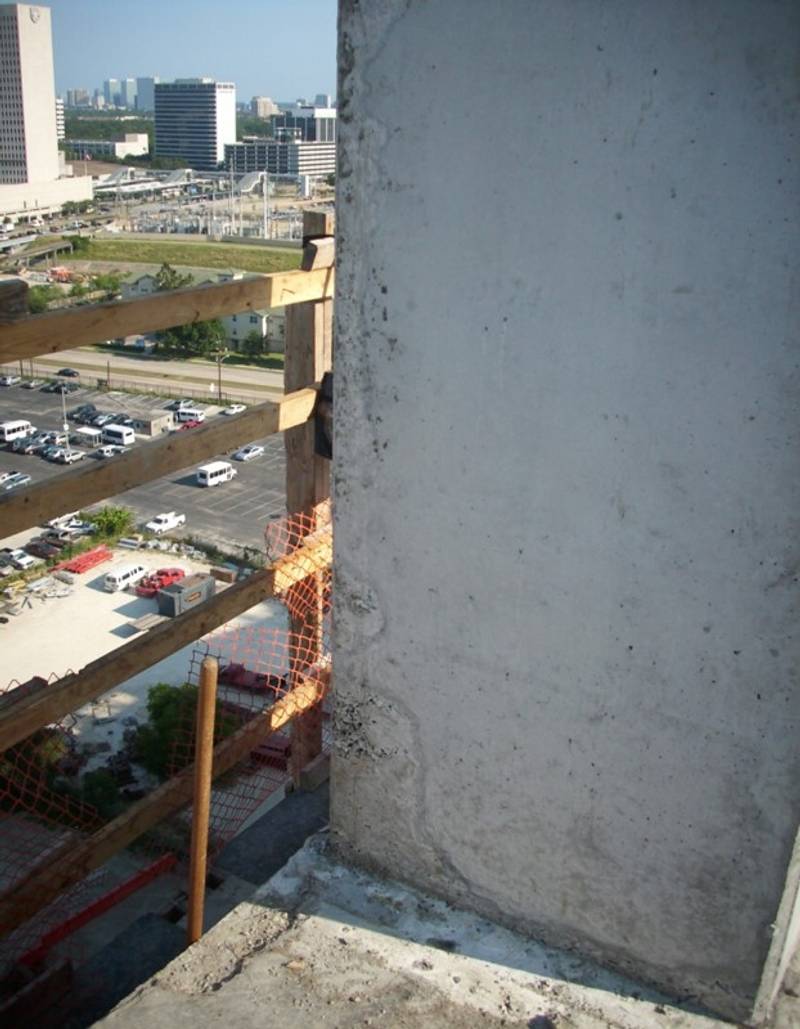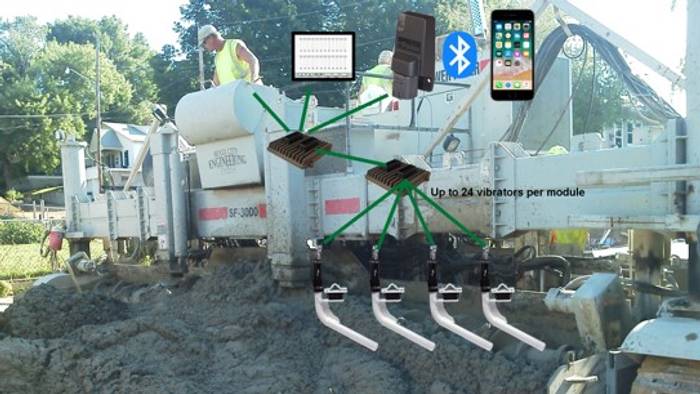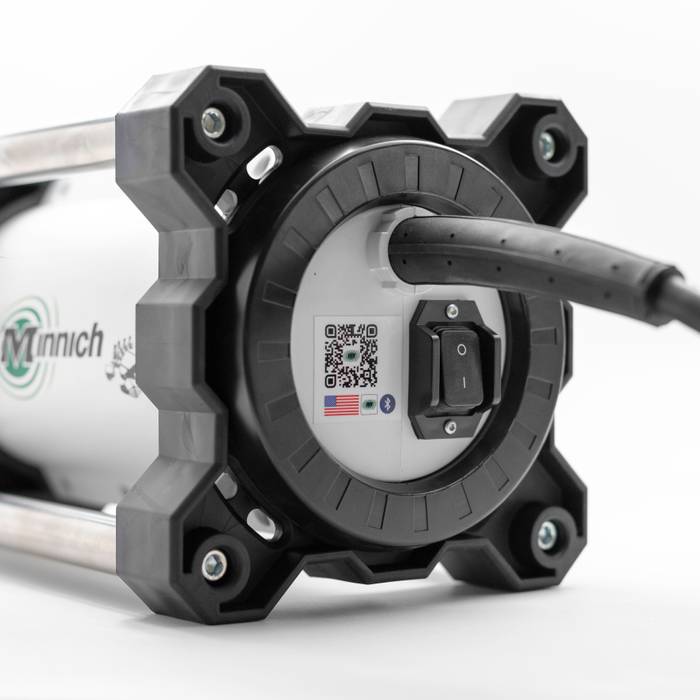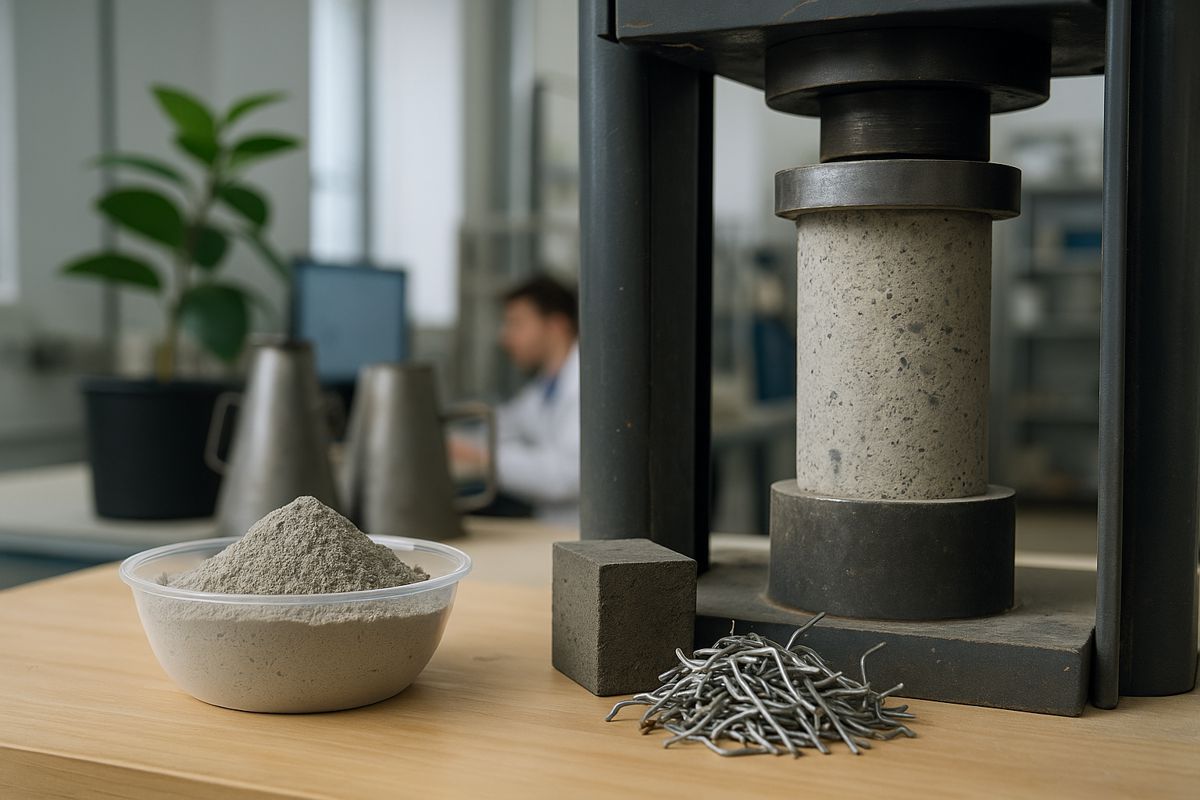Minnich Manufacturing pours research into concrete form face defects
Ongoing research into limiting concrete form face surface defects with Controlled Frequency Vibrators (CFVs) has shown great promise. Field investigations into limiting high frequency vibration to control the amount of concrete material separation in commercial concrete applications are using the same approach to limit the surface distresses in concrete pavements. Researchers have applied some common sense and solid clinical analysis to make pavement surfaces more durable.
The development of on-site non-destructive tests for concrete pavement mixes is being increasingly adopted by state departments of transportation as a viable prediction of the compatibility between vibration variability and concrete mixture variabilities. The normal confusion in quantifying vibration’s effects has been identified and controlled by applying paving vibrator behavior constants coupled with data collected from CFV systems to apply to vibrator frequencies in commercial vibrator applications.

DESTRUCTIVE NATURE OF VIBRATOR FREQUENCY
On a paving machine, vibrators are mounted on no greater than 16-inch centers to ensure enough G-forces ensure proper consolidation away from the vibrator head. The amplitude of the vibrator remains close to a constant value regardless of vibrator speed and the off-center weights of the vibrator manufacturers are closely comparable. Vibrator frequency is isolated as a variable and its effects are studied both clinically and empirically.
The results of studies from state DOTs, federal highway reports, and Portland Cement technical bulletins, identify elevated vibrator frequencies as the culprit in reducing needed air-entrainment and causing aggregate separation. Researchers at The Concrete Pavement Tech Center at Iowa State and the Concrete Research Lab at Oklahoma State have developed testing methods that use CFVs in the evaluation of mix/vibrator compatibility.
For the past 10 years, specifiers and agencies have adopted reduced vibrator frequency ranges of 5,000 to 8,000 vpm for concrete pavements as a standard practice.

LIMITED VIBRATOR FREQUENCIES FOR COMMERCIAL APPLICATIONS
What look like air pockets from under-vibrated concrete to a contractor upon the stripping of forms is usually pockets of separated available water from over-vibration of pumpable concrete mixes. The effects of water movement from high frequency vibration (above 10,000 vpm) is in the initial stages but shows that available water is moved by vibrator frequency. The question is, what effect does frequency have on the concrete structure’s surfaces both in strength and in permeability.
There are several CFVs in the commercial space that are being used both in-house and in field trials. At pre-construction trial for constructability, vibrators that are controlled and range from 10,000 down to 6,000 vpm are being used to find better vibrator compatibility. CFVs that can be manually set at a controlled frequency or operated by a cell phone/tablet are setting compatible speeds for construction. Researchers can look at load curves through the Bluetooth feature of one manufacturer’s CFV flex shaft model and evaluate the concrete mix.

CONTROLLED VIBRATOR APPLICATION AT PRE-CONSTRUCTION TRIALS
What look like air pockets from under-vibrated concrete to a contractor upon the stripping of forms is usually pockets of separated available water from over-vibration of pumpable concrete mixes.
The effects of water movement from high frequency vibration (above 10,000 vpm) is in the initial stages but shows that available water is moved by vibrator frequency. The question is, what effect does frequency have on the concrete structure’s surfaces both in strength and in permeability.
There are several CFVs in the commercial space that are being used both in-house and in field trials. At pre-construction trial for constructability, vibrators that are controlled and range from 10,000 down to 6,000 vpm are being used to find better vibrator compatibility. CFVs that can be manually set at a controlled frequency or operated by a cell phone/tablet are setting compatible speeds for construction. Researchers can look at load curves through the Bluetooth feature of one manufacturer’s CFV flex shaft model and evaluate the concrete mix.

Much like in concrete paving, because the dynamics of the CFV are controlled, the inconsistencies in batching behaviors are being observed. In early trials, a significant distinction between batch uniformity and vibration has been observed and the amount of water available in re-tempered or added water with chemical reducers alters the vibrator/mix compatibility target.
In pavements concrete mixes, batching practices, and vibration are regulated. Although perfection is not guaranteed 100 percent of the time, when a CFV operator knows what a vibrator delivers every time, he can begin to look elsewhere in limiting the effects of vibration on concrete form surfaces.

One thing is certain in the research that has been poured into pre-construction trials: an operator can’t use the same vibrator frequencies for 8-inch slump that he can on 4-inch slump concrete. More importantly, he certainly can’t solve surface defect issues with a tool that behaves differently every time the concrete mix changes.
There are smarter and smoother ways to address form face defects.




















